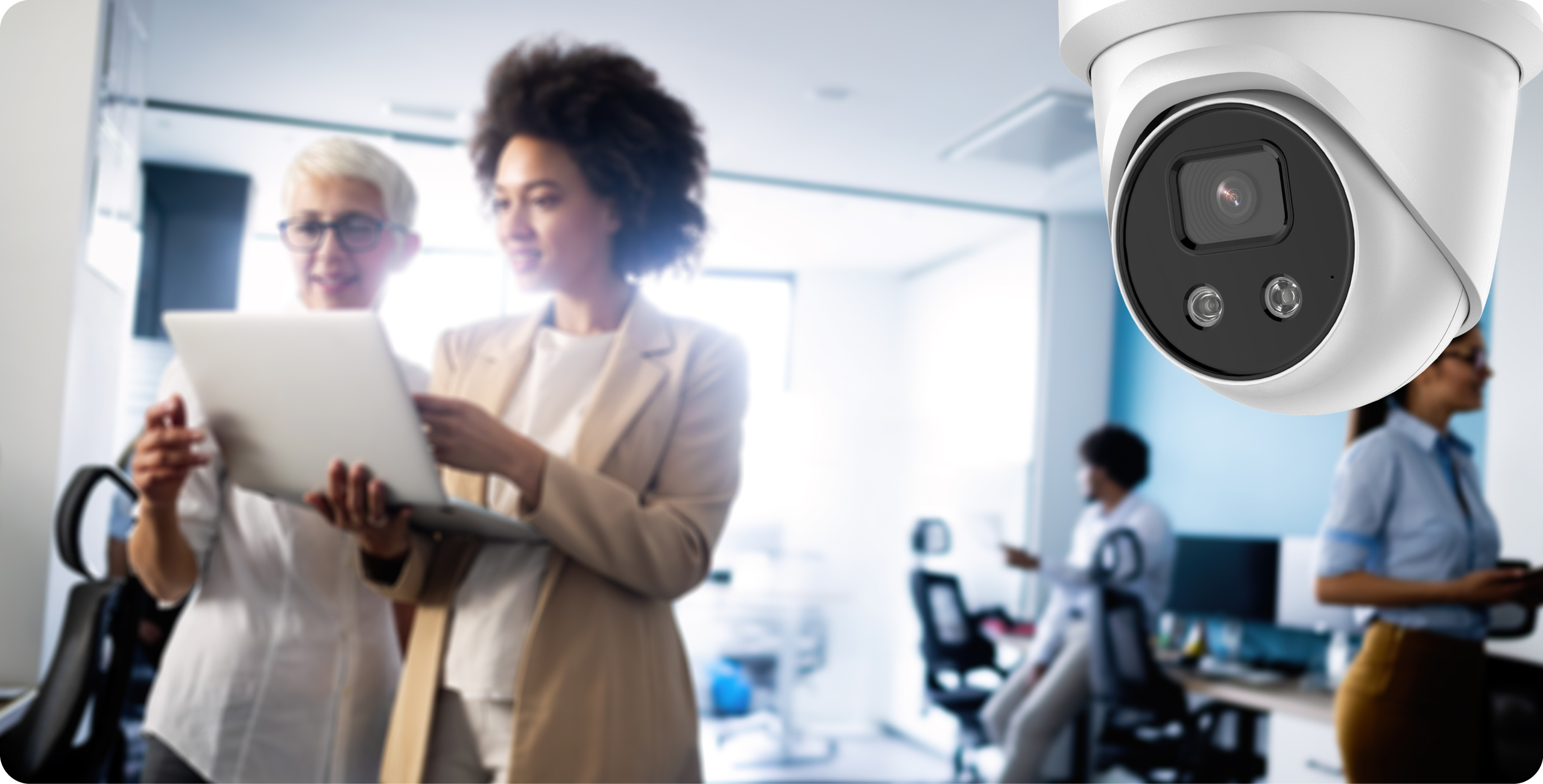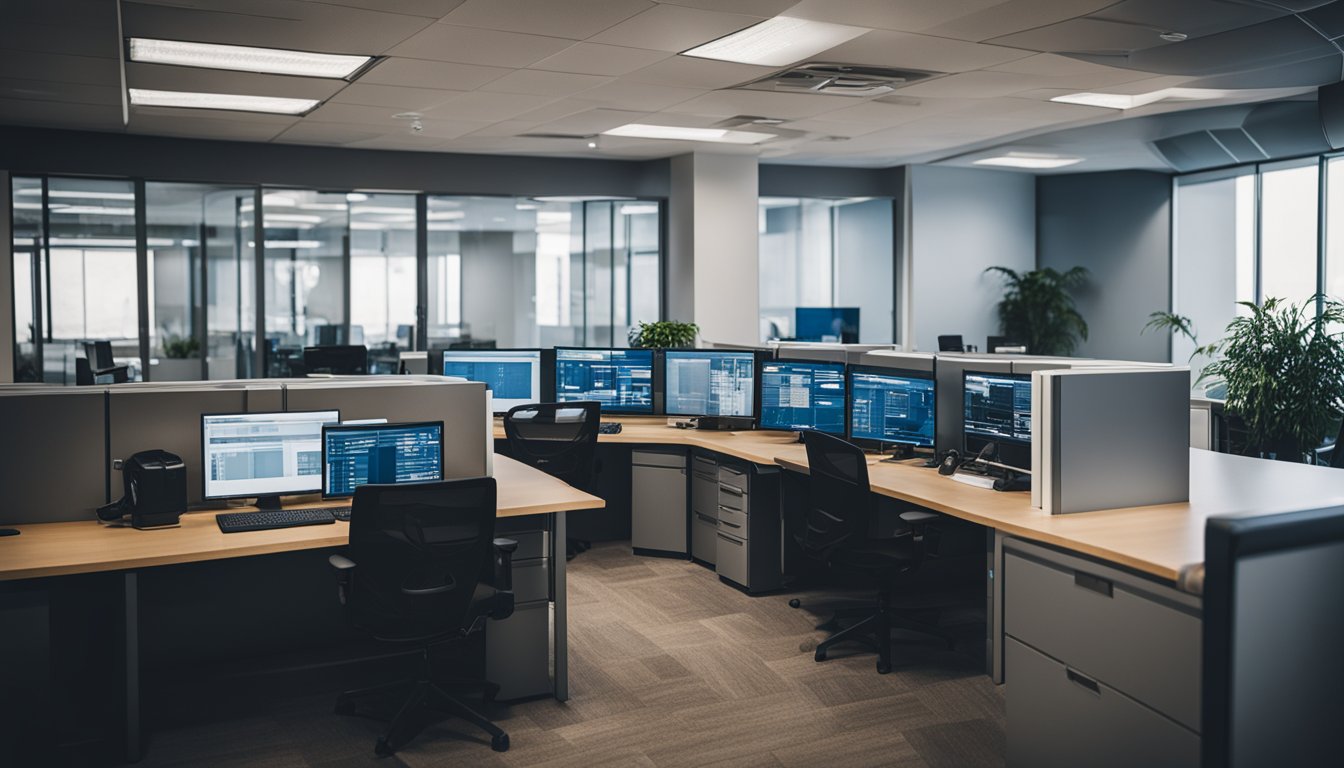
Small and medium businesses (SMBs) are frequently targeted by cybercriminals due to the perception that they have less robust security measures in place compared to larger corporations. Protecting against a multitude of cyber threats is crucial for the continuity and reputation of any SMB. The security landscape for these businesses includes safeguarding cloud security assets, devices on the network edge, and endpoints, all of which are potential entry points for security breaches.
Implementing cybersecurity best practices is an essential step SMBs can take to secure their operations. They must be vigilant in managing their network infrastructure and data, understanding the essential role cybersecurity plays. Actions such as taking inventory of digital assets and discussing cybersecurity with key stakeholders highlight the importance of a strategic approach to security.
SMBs should prioritise actions that mitigate risks from cyber threats, such as ransomware attacks. This includes establishing a backup plan with a tested recovery process and adopting multi-factor authentication to strengthen access controls. By taking proactive steps towards cybersecurity, SMBs can significantly reduce their vulnerability to attacks and ensure the safety of their digital environment.
Small and medium-sized businesses (SMBs) often grapple with the challenge of securing their networks against a range of cyber threats. Cybercriminals target SMBs because they tend to have fewer defensive measures in place compared to larger organisations. A primary concern is phishing – a deceptive practice where attackers masquerade as reputable entities to harvest sensitive data.
Malware and virus infiltrations are also a significant part of the SMB threat landscape. These can disrupt business operations and lead to a breach of confidential information. Ransomware, a specific type of malware, locks data until a ransom is paid, which can be particularly devastating for small businesses that may not have robust backup strategies in place.
SMBs need to keep abreast of these threats by ensuring their cybersecurity strategies evolve. Regular security assessments and employee training can mitigate the risks posed by cyber attacks. Investment in security solutions such as network cameras can add an extra layer of protection and deter physical threats to IT infrastructure.
Cybersecurity practices like maintaining up-to-date antivirus software and implementing strong access controls can thwart many attacks, but vigilance is key. SMBs should be proactive in monitoring their networks for unusual activity that could indicate an impending or active attack.
Ultimately, understanding the nuances of the SMB threat landscape is critical for small and medium-sized businesses aiming to protect their operations from the adverse impacts of cybercriminal activity.

Effective cybersecurity is critical for small and medium-sized businesses (SMBs) to defend against various digital threats. It involves implementing a combination of security solutions and best practices to secure company networks, devices, and data. Essential aspects include the use of comprehensive antivirus and anti-malware software that can thwart malicious attacks such as viruses and ransomware.
One should not overlook the importance of utilising strong passwords, as they are a fundamental barrier against unauthorised access. It’s imperative that these passwords are complex, unique, and regularly updated. Additionally, security measures like two-factor authentication (2FA) add an extra layer of protection.
Businesses should also stay informed about evolving cyber threats, highlighting the need for robust cybersecurity defences. Regularly updating systems and security protocols is necessary to counteract these evolving threats. Initiatives such as employee training can result in a vigilant workforce capable of recognising and responding effectively to potential security breaches.
In implementing best practices for cybersecurity, SMBs can significantly reduce their risk profile and safeguard critical assets against cyber threats. While adopting these fundamental measures, businesses should aim for a strategic approach tailor-made to their specific operations and threat landscape.

In constructing a formidable security posture, small to mid-sized businesses (SMBs) ought to adopt a holistic strategy. Security awareness is pivotal, warranting regular employee training to recognise and appropriately respond to potential threats. Ensuring staff comprehend the value of security measures fortifies the first line of defence.
Risk assessment is an essential first step. It entails identifying and evaluating risks to the company’s network and data. By understanding the specific threats faced, SMBs can prioritise their efforts efficiently.
An incident response plan is crucial – it should be detailed and tested regularly. In the event of a security breach, this plan facilitates a swift and organised response, minimising potential damage. Companies are advised to practice their response to cyber incidents just as they would a fire drill.
Patch management is the process of regularly updating software to fix vulnerabilities. Links can be thin on the digital battlefield; keeping all software up-to-date is akin to bolstering the armour.
A suggested measure in ensuring network robustness is segmentation; this can prevent the spread of an intrusion laterally across the system.
A less discussed yet critical facet of a robust security posture is the acquisition of cyber insurance. This provides a financial safety net and supports recovery should a breach occur.
Finally, SMBs should not neglect the importance of physical security controls alongside cyber ones. Consistent reassessment of security measures aligns with the dynamic nature of the threat landscape. This adaptive approach ensures SMBs can maintain a robust security posture against evolving threats.
One essential practice for SMBs is to choose the right access control systems to secure physical entry points.
This system can be applied to doors, turnstiles, gates, FAAC security barriers, and more, effectively restricting who can enter.
By coupling a basic system with an access intercom, authorised personnel can easily enter via their fob, pin code, or card, while unauthorised personnel must request entry via the intercom. When setting up an intercom system, considering wired or wireless intercom systems can be a pivotal choice, influencing the flexibility and installation process. If you have an automation system for your gate, be sure to incorporate it into your access control system as well.
In addition to these measures, implementing an intruder monitoring system can significantly enhance security. This system continuously scans for unauthorised access attempts, providing real-time alerts and enabling rapid response to potential security breaches. By integrating intruder monitoring with existing security systems, SMBs can achieve a more comprehensive security posture, effectively deterring both digital and physical threats.
Access control systems provide a powerful layer of protection by allowing only authorised personnel to access sensitive areas. The integration of door entry systems with multiple technology readers and data encryption can significantly enhance security.
Another key area is the adoption of multi-factor authentication (MFA) for digital assets. MFA adds an extra verification step, ensuring that compromised passwords alone are not sufficient for a security breach. Engaging in regular patching of software is vital; this closes security flaws that could be exploited by attackers.
For till fraud detection, implementing advanced systems that integrate CCTV with cash registers can help in protecting against internal theft. This kind of integrated security measure is paramount for retailers that deal with significant cash transactions.
Concerning infrastructures, utilising a monitored alarm system can provide continuous surveillance, aiding in the immediate detection and response to any unauthorised intrusion events. Such systems are designed to prevent loss and maximise efficiency, incorporating the latest technological innovations.
High-definition CCTV cameras, such as an Axis, are another great option for monitoring activity around your building. Balancing the benefits of an intruder alarm system with the visual assurance and record-keeping of CCTV can create a robust security framework for your business.
While considering this option, you might come across interesting security camera facts that highlight the advancements in technology, offering features like cloud storage for your footage, which can reduce hardware needs and provide better protection.
Employees are often seen as the first line of defence against cyber threats. Security awareness training is paramount; it equips staff with the knowledge necessary to identify and avoid potential cyber-attacks, such as phishing and spam. A well-informed team can reduce the likelihood of breaches significantly.
Employee Training:
Phishing Attacks represent a major threat vector. During security briefings, it’s crucial to demonstrate common tactics used by criminals. Employees should be trained to scrutinise email addresses, links, and attachments before interacting with them, and report any dubious communication.
Key Cybersecurity Tips:
When it comes to securing the human element in cyber security, the adage ‘forewarned is forearmed’ rings particularly true. An educated workforce, aware of the tactics employed by adversaries, is essential. This is not a once-off effort but requires ongoing attention to keep pace with the continually evolving nature of cyber threats.
Effective data protection involves layers of security to defend against a data breach. Small and Medium-sized Businesses (SMBs) need to assess their assets and implement robust backup strategies that suit their specific needs. The increased reliance on CCTV cloud storage provides an added layer of security with off-site data storage options, which can be crucial for businesses dealing with sensitive visual data.
Firstly, establish a routine for backups and ensure they are performed regularly. This may include daily, weekly, or monthly backups depending on the urgency and sensitivity of data involved. It is essential to perform these backups at a time that least disrupts business operations.
In the event of a data breach, having these backups readily available supports a quicker recovery process. Additionally, SMBs should consider encryption for their backups to protect against unauthorised access.
A managed service provider can offer expert support, taking the complexity out of data protection. They can handle the backup process, ensuring data is safe and sound, and can swiftly restore information if needed. For enhanced security, storing backup data off-site, such as through CCTV cloud storage, helps protect against physical damages like fire or theft.
Lastly, routinely test backup systems to confirm the integrity of the information – this aids in identifying potential failures before they become significant issues. A well-structured backup strategy is an SMB’s best defence in the preservation and recovery of their critical data.

Selecting a security partner is a critical decision for small and medium-sized businesses (SMBs). With the right managed security service provider (MSP), they can achieve significant enhancements in their cyber defence mechanisms.
Key Factors to Evaluate:
| Consideration | Why It’s Important |
| Customised Approach | Ensure that the services provided address specific business risks. |
| Proven Competence | Affirms that the MSP can handle complex cyber threats. |
| 24/7 Availability | Cyber incidents can occur at any time; continuous support is essential. |
| Partnership-centric | Seeks an MSP that values long-term relationship over transactions. |
By investing time in choosing the right cybersecurity partner, SMBs can benefit from the latest technologies and expert knowledge without the need for an expansive in-house team. This approach turns security from a daunting challenge into a manageable and strategic advantage.
Businesses, particularly small and medium-sized ones, must keep pace with the latest technologies in order to secure their digital infrastructure. The modern cyber threat landscape is not static; it is continually evolving, with new forms of cyberattacks surfacing regularly. As such, the attack surface – which encompasses all the points where an unauthorised user can try to enter data to or extract data from an environment – expands with each new technology adopted.
One best practice for IT security in organisations is the implementation of continuous monitoring. This includes:
This continuous monitoring also extends to staying abreast of emerging threats. Routine audits of security measures can help identify potential vulnerabilities within a system before they are exploited.
Finally, SMBs must also consider the human aspect of security. Educating employees on the importance of keeping up to date with security trends is as crucial as the technology itself. Effort should be placed on training staff to recognise suspicious emails and online activity that could lead to security incidents.
Technology and trends in cybersecurity are moving targets, but by remaining vigilant and proactive, businesses can greatly reduce their risk profile and strengthen their defence mechanisms against cyber threats.
When it comes to cybersecurity, small and midsize businesses (SMBs) must ensure they have robust security policies in place. These policies serve as the foundation upon which a company builds its defence against cyber threats.
First, an SMB should align its policies with established security standards. Identifying relevant frameworks – be it ISO 27001 or the NIST cybersecurity framework – provides structured guidelines for the IT team to follow.
Cybersecurity policies should encompass a variety of areas, including but not limited to data protection, network security, and incident response. For businesses utilising content management systems (CMS) such as WordPress, specific policies should govern the creation and management of content to safeguard against common vulnerabilities.
Here is a concise outline to follow:
For the IT team, enforcing these policies means constant vigilance. They must ensure software is up-to-date, monitor content management systems for unauthorised changes, and verify that all digital assets meet security benchmarks.
It is not enough to create policies; SMBs must actively enforce them through regular training sessions, assessments, and revisions. By doing so, businesses not only secure their operations but also cultivate a culture of security mindfulness amongst their staff.
By following these security tips, you can protect your business and ensure its continuity. Remember, don’t compromise on security and seek professional assistance to ensure your business’s safety.
Contact us today at 01 689 6390 for a free consultation and learn how we can help safeguard your business.